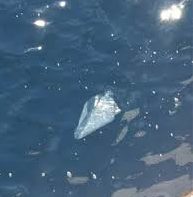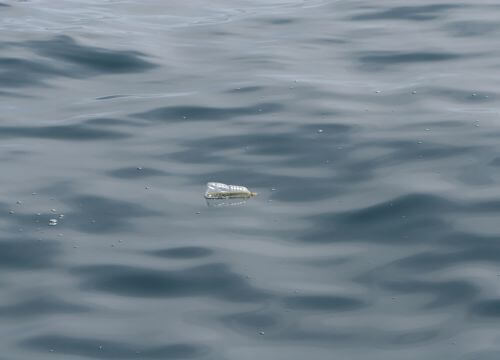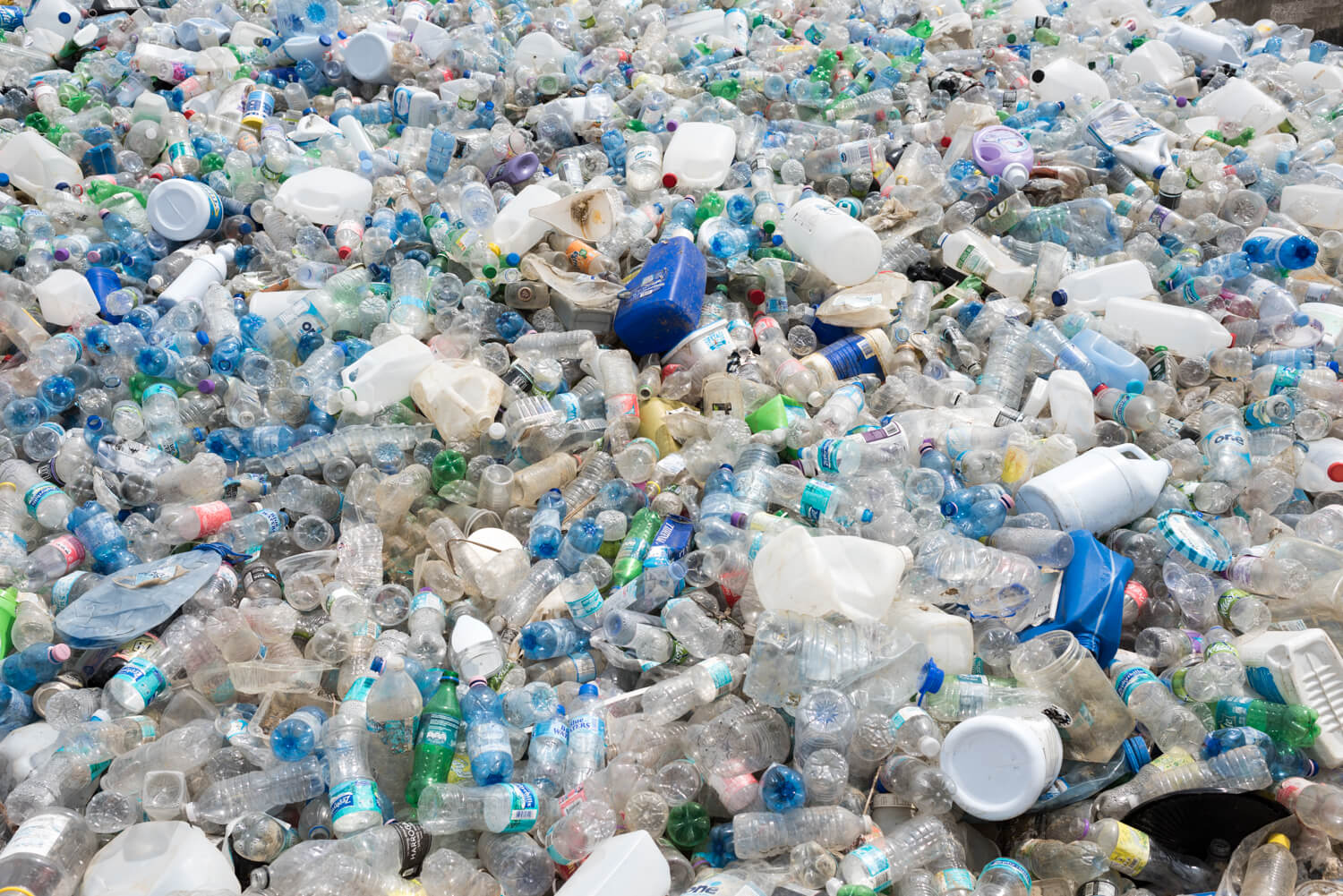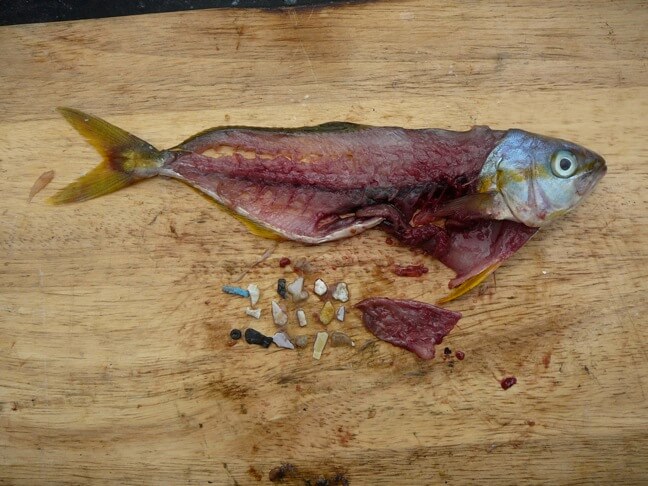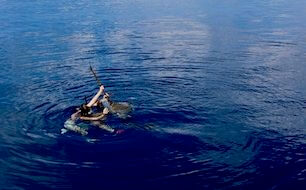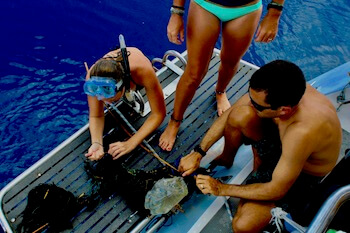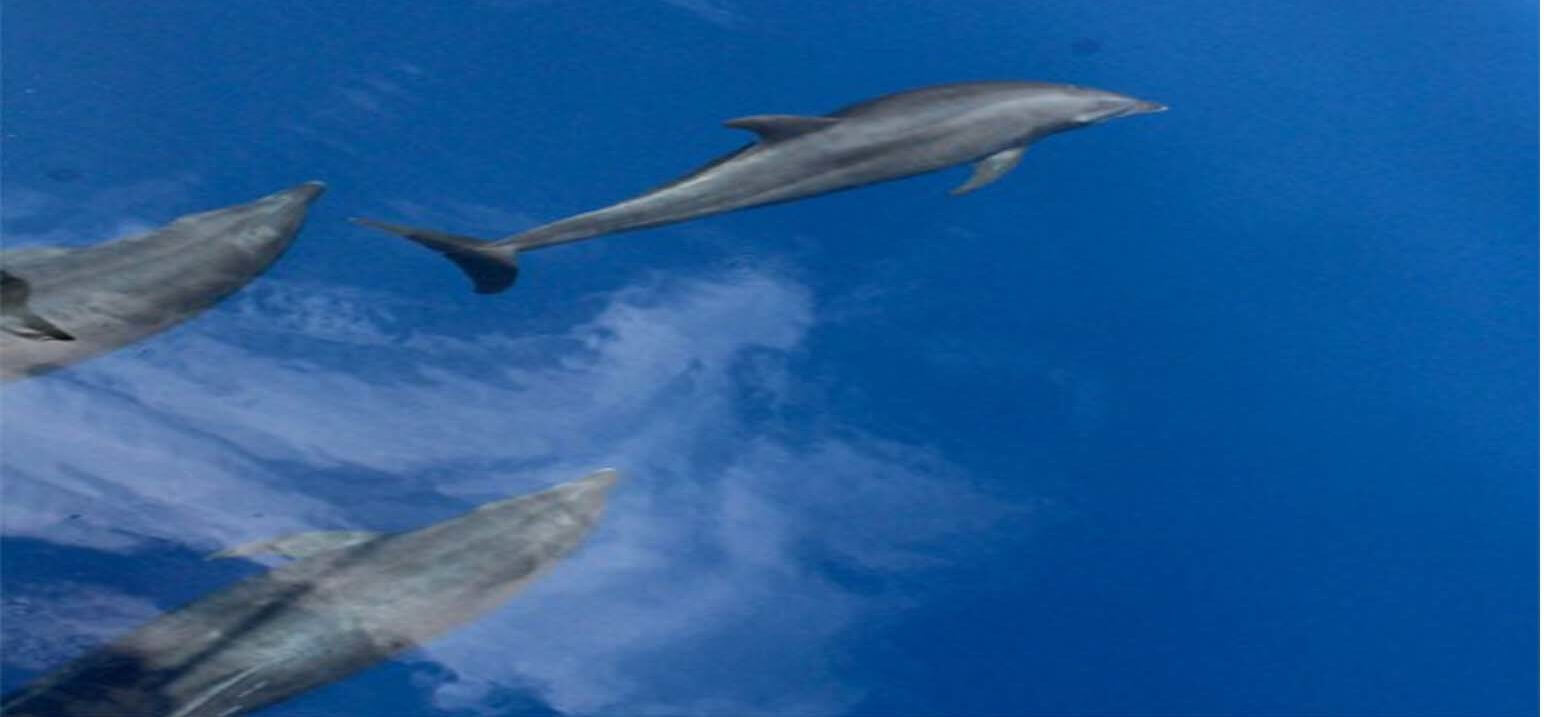Plastic Paradise
by Jen Pate – Deckhand aboard Sea Dragon.
“The most important thing we extract from the ocean is our existence.”
Sylvia Earle, World Ocean Summit 2014
We’ve reached the halfway point – a day of celebration and appreciation among the small crew on our passage from Panama to Mexico! As we continue to roll through our watches, 4 hours on and 6 hours off – the morning of Tuesday the 6th March finds myself and Eric on watch, joined by Ally who was just off watch, but enjoying the scenery.
As we move along, we are constantly vigilant of the seas around us – on the lookout for boats, squalls, wildlife and sadly, debris – the most common being plastic.
The beginning of our passage had been surprisingly plastic free as we navigated the 1000 nautical miles offshore along the coasts of Panama, Costa Rica, Nicaragua, Honduras, El Salvador and Guatemala. As we passed through each of their waters it was fun to plot our position on the paper chart, and although we weren’t experiencing their individual on-land cultures, we were, in a way, exploring their countries in a unique and rare fashion – by sea. Exploring the changing colours of the water, the height of the waves, the shifts in wind patterns and currents, the abundance of wildlife, the increasing rarity of boat traffic and of course – keeping our eyes peeled for some of the most obvious evidence of human impact on the ocean – trash.
As we passed from Guatemala to Mexico just the day before – in the second half of my morning watch, we had a current which slowed our speed by 2 knots. I watched the seas as other crew lay sleeping – Shanley kindly down below cooking food for everyone (something we take in turns as we roll through our 24/7 watch schedule). As I sat there, I counted over 43 pieces of plastic drifting by.
Let me repeat that – 43 pieces in under two hours.
To put that into context, in the same time period I’d also counted 2 beaked whales, 3 turtles,
8 dolphins, 5 birds and 1 blue marlin. That means the plastic I saw outnumbered these animals with a ratio of over 2:1. Obviously this is only a short period of time and it is highly likely that the wildlife seen was only a mere 1% of what’s actually there. But this same rule also applies to plastic. The majority of what is out there is invisible to the naked eye, and as articles published are stating that by 2050 we will have more plastic than fish in the oceans, it’s shocking just the same no matter how you look at it (MacArthur Foundation, 2017).
11 of these were more obvious to the eye – floating plastic water bottles. If you want to know more about why for the health of the planet (and yourself) you should stop using plastic bottled water – just type in to Google “plastic bottled water health threats” and be forever cured of your addiction.
As well as these floating toxic timebombs, I also spied 32 fragments of plastic. These ranged in size from small dots on the surface, to large pieces – a foot in diameter. These were fragments of plastic visible to the eye, without binoculars, at varying distances just looking around as we passed by. Ranging from what looked like the bottom of a plastic wash basin to plastic tubing, a plastic grocery bag (easily confused with a jellyfish at first)
to many pieces where it’s impossible to discern what they were – these fragments are the remnants of larger pieces of debris that have made their way into the ocean and have been broken down over time by physical and photo-degradation.
But these fragments are likely still in their infancy if we look at their water-borne lifetime. Although they are “degrading”, these pieces of plastic will never truly disappear. That’s the thing about plastic – it’s an amazing material, it was designed to last forever. Sadly, it wasn’t designed to be used and thrown away as frequently and abundantly as it is now in our consumer and convenience-driven society – and it certainly wasn’t meant to find it’s final resting place on our shorelines and in our waters.
photo by Agathe Bernard aboard SD 2017
Once out in the water, plastic breaks down smaller and smaller until we can’t see it anymore – eventually becoming microplastic (5mm in diameter or smaller) and then nanoplastic (1mm in diameter or smaller). As it continues on it’s journey, these fragments either join massive accumulation zones in the oceans – the now widely reported “Subtropical Ocean Gyres” – or they join outliers in the ocean, creating a pervasive invisible smog across the surface of the water or begin to sink and join their predecessors in the water column and on the ocean floor.
According to our wonderful friend Jenna Jambeck, who sailed with both Shanley and I on board Sea Dragon back in 2014 – over 8 million metric tonnes of plastic makes its way into the Oceans every year (Science, 2015). Jenna’s groundbreaking quantification of our global addiction and clear lack of ability to deal with the waste management of this material, has been a leading force in demanding change around the world. Yet, the evidence of plastic’s presence is still profound to those both on the beaches and shores as well as the community of sailors like us, actively exploring the open seas.
As well as the implications of the plastics/toxics relationship (plastic has toxics and chemicals inherent in it as well as acting as a sponge for other toxics and chemicals in the water around it) and of animals ingesting plastic – leading to starvation and food chain contamination (that’s right – if you eat seafood, you likely are ingesting both plastic and a plethora of toxics…sorry, not sorry) there is the very obvious and direct impact of plastic on wildlife – which we were hit with the reality of that very morning.
photo by Marcus Eriksen aboard SD 2011
As Eric and I shared stories from previous sailing trips, we watched the seas – hoping to spot something exciting as we had in previous days: dolphins, whales, turtles, birds… to name a few.
Eric scanned the starboard horizon and I took the port, continuing to chat – pausing only to point if we saw a particularly interesting splash. All of sudden Eric switched off the engine, the only previous time he had done so was when we were sailing, going for a swim or to stop us getting caught on a giant fishing net he had luckily spotted during one of our watches several days before.
But unlike normal when we usually exclaim with excitement over wildlife he quietly responded to my “what’s up?” with a “I think there’s a turtle trapped in plastic over there
As he swiftly manoeuvred the boat around – an impressive feat for our 72ft, 90,000lb vessel – I moved quickly to the starboard side for a closer look and to keep my eyes on the debris. Just as I had reacted with surprise to the engine going off, soon enough heads popped up the companionway from down below – curious to find out what was going on.
As the crew came up on deck we all watched in silence as we floated past a very still turtle, trapped in what looked like a homemade fishing apparatus consisting
of a bamboo frame and plastic netting. It was surrounded underneath by a school of trigger fish.
These FADs (Fish Aggregating Devices) are sadly not uncommon in the world’s oceans. Debris doesn’t only come in fragments, but can instead come in massive clumps (this was a particularly small one, only four feet across by one foot deep) that create micro-environments for marine life to cling to and travel thousands of miles across oceans. FADs come with their own range of issues (invasive species transportation to name but one) but today showed one of their potentially most deadly – animal entanglement.
As we contemplated what to do, there was a brief discussion about whether the turtle was already dead. I offered to dive in and take a closer look. At worst, if the turtle had already perished we could still cut it loose and remove the plastic debris from the ocean – ensuring it wouldn’t cause more death or injury in future.
It was agreed that I’d go in. I grabbed my mask and snorkel and jumped off the side of the boat – quickly displacing the school of fish. It was an easy 15 foot swim to the FAD and as I approached, I was filled with dread as the turtle still didn’t move. It wasn’t until we
were face-to-face and I gave him a gentle poke that the turtle awoke and at the sight of my goggled face began to furiously paddle with it’s free flippers – away from me.
As I turned back to give the good news but also request a knife and some help, I drifted farther from both the boat and the turtle (who was making surprisingly good distance given his situation). I yelled for Shanley – my most trusted partner in all adventures – and as she donned her gear, I followed Eric’s instructions to swim after the turtle and Shanley would meet me there – the boat following soon after.
As I caught up with the turtle, now a good 100 feet from the boat, I started to investigate just how he was entangled so that when Shanley arrived we could release him as quickly and painlessly as possible.
As I watched his laboured movements, I noticed he was trapped by a fishing net that had become wrapped around his front right flipper and with the repeated motion of swimming it had been cutting a deep groove in to the flesh of his shoulder – no wonder he had been lying still when we found him.
With no time to feel anger or sadness (yet) Shanley arrived. I communicated the situation above water and we soon got to work down below, communicating underwater with pointing and signals.
I tried to get my fingers between the net and the turtle’s shoulder – to create enough space for Shanley’s knife to begin the cut. The turtle began to flail and so we quickly changed tactic with Shanley cutting the net just short of the loop. I found myself quickly grabbing the flipper with one hand and the shell with the other – sculling to stay afloat. As naturally as you would to an animal on land, I found myself making calming noises and noticed the turtle become more still. As we touched – hand to flipper, I became aware of the unique bones allowing these creatures to swim incredible distances effortlessly (when not held back by plastic).
As Shanley finished sawing at the net it broke free, pushing all three of us away from one another, and as I looked down – the turtle could be seen swimming elegantly and as fast as he possibly could into the most blue abyss I had ever seen.
Shanley and I surfaced, pulling our masks off and looking at each other in amazement. Without a word we high fived and went about dragging the FAD back to the boat through the water – curious trigger fish in tow.
With the help of Eric and under the watching eyes of our ever supportive crew mates Ally, Iona and Andy – we began to pull the FAD apart – placing the biological material back in the water and keeping the net and other metal parts on the transom to continue the journey with us to Mexico.
As is the reality of removing FADs from the ocean, there are always casualties. Unfortunately marine life who had become residents in the float (mostly small crabs) were sent to the deep blue where we knew they would not survive. As is the way with these situations – you need to make your peace with the knowledge that a FAD removed from the water will save far more lives then those that are lost by it’s removal – making absolutely no tally of what life is more valuable than another.
The entire process took us over an hour, and we found ourselves at the time of day for our normal daily swim (when the seas are calm enough and we are not under sail). As we lapped around the boat we soon realised that the school of fish remained, joined by a 2ft silky shark circling below.
All of a sudden we became aware of another presence, at first the flash of a dorsal fin, the sight of a blow above the water and the sound of chirping beneath the surface. We were joined in our swim by four wild bottlenose dolphins – most likely curious about our boat but equally drawn by the feast of fish left behind by the FAD. We watched in silence as they swam around and underneath us, communicating with one another, swimming with absolute synchronicity and grace.
For half and hour we enjoyed their company in complete awe, climbing back on to the boat only when they were finally moving out of sight. We all watched as their fins disappeared into the distance.
As we began to make ready to move again, I couldn’t help but sit and stare at the horizon. My emotions moving quickly from anger and frustration around the predicament of the turtle – and many more animals like him that go unseen and unsaved – to the irreplaceable beauty, mystery and vital nature of the oceans and their inhabitants; so key to our very survival. Regardless of where we live on the planet, over half of the oxygen we breathe – comes from the oceans.
Each day that I am lucky enough to spend on the water – whether onboard Sea Dragon sailing the oceans and seas or at home paddling the Great Lakes – refreshes my determination to continue working to connect people with the oceans and waterways, remind them of our undeniable interconnectivity with the world around us and to inspire a duty of care to protect our planet.
Everyone has their own little slice of this paradise we call home and we can choose to either be blind to it’s degradation – continuing to be part of the problem – or acknowledge the challenges and meet them head on, helping to create solutions for a healthier future. Let’s all be brave and make choices that not solely benefit ourselves, but improve and protect the environment we are so intrinsically a part of.
——-
Learn more about what you can do about plastic pollution & how you can help:
